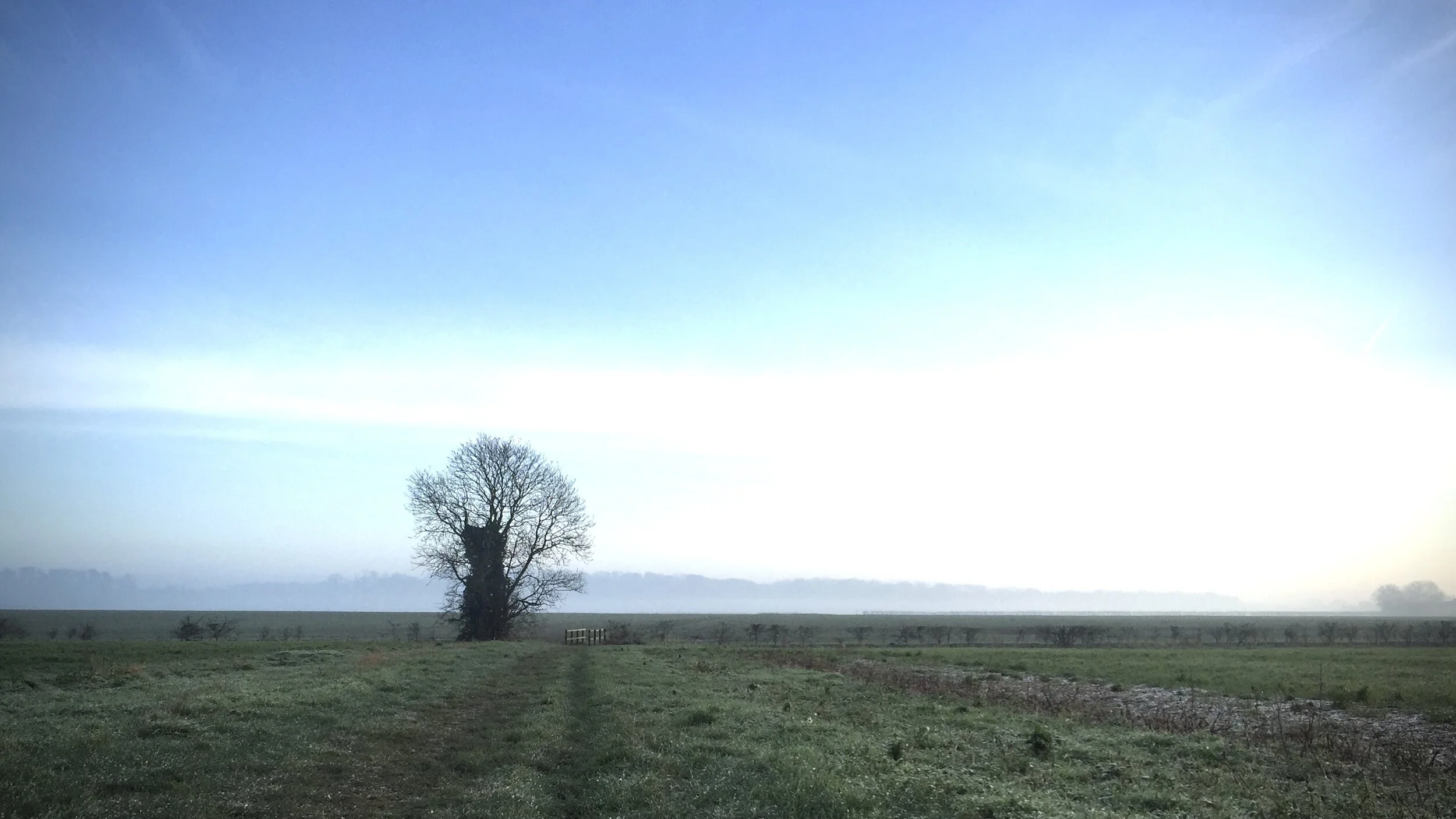Consideration
The Tree: iPhone
“I consider a tree.
I can look on it as a picture: stiff column in a shock of light, or splash of green shot with the delicate blue and silver of the background.”
Over the years, this tree has remained steadfast.
I enjoy how it confounds the notion that ‘the only constant is change.’
Seasons come and go, the crops rotate, buds spring and leaves fall, light shifts and sparkles, and as the tree has held its sentinel place on the landscape, I’ve returned its gaze.
The tree, the landscape, the weather, the air, the birds, the tracks I’ve left alongside those of the dogs, foxes and rabbits all exist within the intertwined ecology of life. We live within a dialogue of interdependent voices and none of us are ever viable alone.
Our gaze is mutual. We see each other.
Recently, I‘ve been pondering the possibility of integrating a dialogic approach into diversity ‘training’ and wondering whether genuine dialogue, experienced over Zoom, is a workable method. Our virtual media tend to favour a monologic, ‘delivery’ approach; we become passive as we stare into a screen of small faces, yearning for the wholeness and full embodiment of a ‘real’ meeting.
My quote from Martin Buber’s ‘I and Thou,’ his consideration of a tree, continues for several more stanzas as he opens himself to the diverse aspects of the relationship. He repeatedly ‘sees’ the tree differently:
“I can perceive it as movement: flowing veins on clinging, pressing pith, suck of the roots, breathing of the leaves, ceaseless commerce with earth and air—and the obscure growth itself.
I can classify it in a species and study it as a type in its structure and mode of life.”
But, as his poem unfolds, he sees through his distant, objectifying, observational stance and finds his way into relationship with the tree, finally declaring that:
“Let no attempt be made to sap the strength from the meaning of the relation: relation is mutual.”
As I consider the DEIB* program, I wonder how we might start as we mean to go on, stepping away from the muting effect of the power and authority assumed in conventional L&D ‘delivery,’ and take seriously the notion of a genuinely shared inquiry into the ways in which we each experience the ‘other.’ How might we contain the paradox of valuing individual uniqueness while holding onto a thoughtful appreciation of our deeper kinship and mutuality?
My tree holds its stance in a way that singularly orientates me in the landscape while gracefully, beautifully, acknowledging that it is of the land.
And so, I am designing around an appreciation of our individuality and togetherness in mutual grace and beauty.
A design that I hope means that we can remain both dialogic and steadfast.
Notes:
*DEIB - a common acronym for Diversity, Equity, Inclusion and Belonging.
Please do read Martin Buber’s ‘I and Thou.’ The language is tricky, anachronistic (the book has been likened to walking into a foreign film halfway through without knowing the language of the subtitles…!) and the English translations struggle to maintain the sense of the original German. But, if it captures your imagination, Kenneth Paul Kramer and Mechthild Gawlick’s comparison of two translations in ‘Martin Buber’s I and Thou: Practising Living Dialogue’ is marvellous.
The full text of ‘I Consider a Tree’ is here.
For a more up to date and applied perspective, ‘Dialogue and the Art of Thinking Together’ by William Isaacs is one of those books that I’ve picked up so many times that my copy is falling apart…
Finally, take a look at the Academy of Professional Dialogue who offer resources and conferences which promote and develop the profession.















